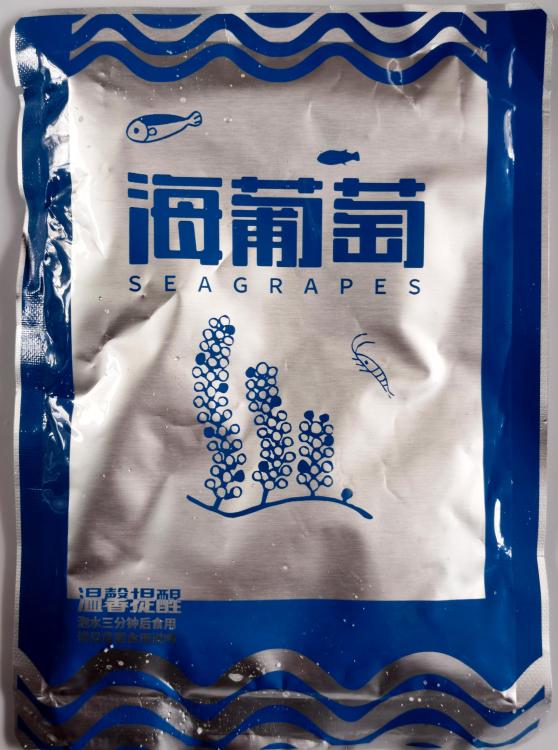This is a favourite, which I have mentioned before. Sea grapes, green caviar or sea caviar. In Chinese it’s 海葡萄 (hǎi pú tao), a literal translation of ‘sea grapes’ as are うみぼど (umi-bodō), the Japanese name, mga ubas sa dagat in Filipino and nho của biển in Vietnamese. Caulerpa lentillifera to the scientific.
Not to be confused with the Caribbean tree named ‘seagrape’.
This is a bright green alga which grows only around the waters of the above named countries (those I get come from neighbouring Vietnam) where it forms strands of two to five metres and its ‘branches’ grow to about 20 mm / 8 inches carrying tiny air sacs which resemble miniature grapes. These pop audibly when it is eaten, giving it its caviar related names. This seaweed is only normally eaten raw in salads or with sushi and sashimi. They last well if covered in the brine but shouldn’t be refrigerated.
It is sold in pouches in a brine of seawater concentration. The ‘grapes’ are soaked for three minutes in fresh water and swell up. This reduces the saltiness, although some remains. For a less salty taste soak again for another three minutes. It tastes of the sea, as you would expect, and has a delicate grassy flavour, but most of the appeal is in the popping, although it is highly nutritional, being packed with minerals and vitamins A and C.
To protect itself, this species is mildly toxic, but this presents no real problems to humans when it is eaten in normal amounts. However, it advisable to avoid it during pregnancy.


.thumb.jpg.6445dd285d40dd7a91e45100b124e60e.jpg)



